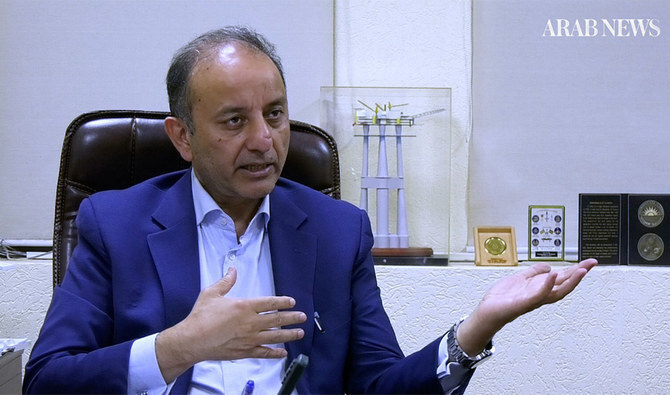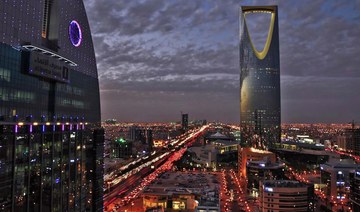RIYADH: Spending on Vision 2030 programs by Saudi Arabia has increased by an annual rate of 33.8 percent since the launch of the Kingdom’s economic development initiative.
The announcement was made by Finance Minister Mohammed Al-Jadaan following the budget’s approval.
Al-Jadaan explained that the 2025 budget is designed to continue strategic investments in developmental projects, aligning with sectoral strategies and programs under Saudi Vision 2030.
On Tuesday, Saudi Arabia approved its state budget for the fiscal year 2025, with projected revenues of SR1.18 trillion ($315.73 billion) and expenditures of SR1.28 trillion, resulting in a deficit of SR101 billion.
The minister emphasized that the government remains dedicated to projects that promote sustainable economic, social, and environmental benefits. These include improving the business environment, boosting the trade balance, and increasing both local and foreign investments.
“We identified that the nominal GDP has achieved greater growth from 2015 to 2023,” Al-Jadaan said during a press conference on the budget.
He also highlighted the growing contribution of non-oil sectors to the country’s GDP. “The contribution of non-oil activities to the gross domestic product increased from approximately 47 percent in 2016 to around 52 percent by the end of the first half of 2024,” Al-Jadaan noted, adding that such a shift was “extremely challenging to achieve within six years, as structural economic transformation does not occur in one or two years.”
The finance minister reaffirmed that the government continues to prioritize citizens' basic needs, with a focus on education, health, and social services. “There is a continued approach of planned expansion by the government to improve services provided to citizens and enhance the quality of these services. This expansion focuses on accelerating strategies with significant economic impact on jobs, business opportunities, and the sustainability of the Saudi economy,” he said.
He also reiterated the government’s commitment to completing ongoing projects, integrating technology and infrastructure into the broader economic system.
Al-Jadaan expressed optimism regarding the Kingdom’s economic indicators. “Economic indicators call for optimism, and non-oil GDP helped (overall) GDP continue to grow,” he remarked.
The minister clarified that the projected deficit in the 2025 budget aligns with the government’s financial planning framework, stating that Saudi Arabia plans to continue both local and international financing operations to cover the deficit and meet its debt obligations.
He also noted that the Kingdom is focusing on alternative financing methods to bolster economic growth, particularly through strategic spending on Vision 2030 programs. “The 2025 budget aims to maintain the Kingdom’s financial position and achieve fiscal sustainability by preserving manageable public debt levels and substantial government reserves,” Al-Jadaan explained.
“Debt levels in Saudi Arabia remain lower than those of most countries in the G20,” he added.
Al-Jadaan confirmed that government reserves are expected to remain stable at around SR390 billion by the end of 2025.
The finance minister also discussed the role of various sectors in driving economic growth. “The industrial sector is extremely important for several reasons, the foremost being national security. Having a robust industrial base means reducing exposure to external risks,” he said.
He further emphasized that exports and job creation within the industrial sector enhance the country’s balance of payments and support the broader economy.
Al-Jadaan highlighted tourism as another key sector contributing to job creation and economic stability. “Tourism, both in Saudi Arabia and globally, is one of the largest sectors contributing to job creation in the economy. It is also among the key sectors that significantly support the balance of payments,” he said. He noted that investments are being directed towards tourism projects and services across the Kingdom.
The transportation and logistics sectors were also emphasized as essential to the Kingdom's economic future. Al-Jadaan pointed out that a robust logistics infrastructure is crucial for the success of the industrial sector. “The transportation and logistics sector also has direct benefits, including the creation of logistics hubs that capitalize on Saudi Arabia’s central location, connecting three continents and serving as a strategic global crossroads,” he stated.
Turning to the energy sector, Al-Jadaan clarified that Saudi Arabia’s energy strategy encompasses much more than oil. “When discussing the energy sector, I am not referring solely to oil. I am speaking about the broader concept of energy, including renewable energy, gas, gas networks, and their delivery to industrial zones across the Kingdom,” he said.
He also discussed progress in the military sector, noting that the Ministry of Defense has completed its 10-year plan, with implementation already underway.
“The military sector has seen significant progress, with the Ministry of Defense completing its 10-year plan and the military sector now moving forward with its implementation,” Al-Jadaan explained.
Addressing the broader global economic landscape, Al-Jadaan assured that the Kingdom is maintaining stability despite external challenges. “Inflation in the Kingdom is under control despite its rise globally,” he said.
On public finances, the finance minister highlighted the role of Saudi Aramco in supporting government revenue. “Public finances in Saudi Arabia receive main sources of revenue, one of which comes from oil through the Aramco company. The first source is called the ‘royalty,’ which is a well-established concept with international standards. In Saudi Arabia, the royalty rate is set at 15 percent of Aramco’s oil sales,” he said. He also pointed out that Aramco is required to remit 50 percent of its profits to the government.
Al-Jadaan also touched on government efforts to control fuel prices, stating that billions are being spent to prevent price hikes. “When the Saudi government listed Aramco shares on the financial market, it had several objectives, all of which have been achieved. These included enhancing transparency, monetizing some of these assets, and utilizing the proceeds to support ongoing economic initiatives,” he said.
Finally, when discussing major infrastructure projects such as NEOM, Qiddiya, Diriyah Gate, and the Red Sea Project, Al-Jadaan emphasized that these initiatives have dedicated companies with their own budgets. “These companies have budgets allocated from the sovereign fund, not from the public treasury. They spend based on these budgets and they’re held accountable accordingly,” he stated.
Addressing inflation, Al-Jadaan clarified: “There is no officially targeted inflation rate in Saudi Arabia. However, globally, an inflation rate of 2 percent or 3 percent is considered acceptable.”
In conclusion, Al-Jadaan reaffirmed that the Saudi economy remains on a positive trajectory thanks to the government’s proactive policies and long-term planning, positioning the Kingdom to navigate both local and global challenges effectively.






















